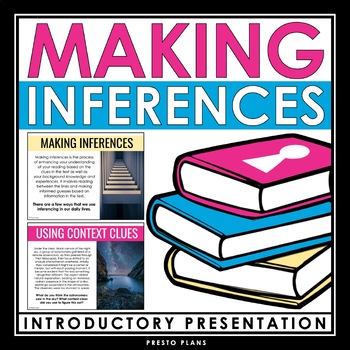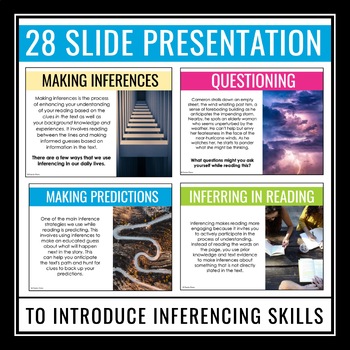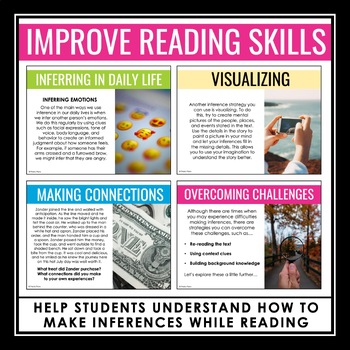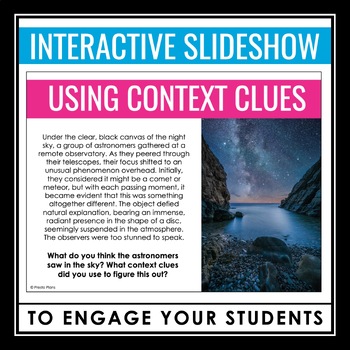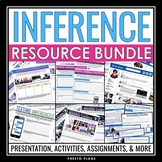Inference Presentation - Introduction to Making Inferences in Reading Slideshow
- Zip
What educators are saying
Also included in
- This inference activities bundle includes creative activities and assignments designed to help your students improve their inferential thinking. Inference can be a challenging reading skill for your students to master, but this best-selling bundle has a multitude of activities, assignments, worksheePrice $19.99Original Price $30.94Save $10.95
Description
Inference Presentation - Introduction to Making Inferences in Reading Slideshow is a ready-to-use lesson to help students understand what it means to infer information while reading. Inference is a challenging skill for students to understand and master, but this presentation breaks the reading skill down in detail with examples to help students master the skill and apply it in their reading.
The presentation covers topics like inferring in everyday life, practical skills and tips for inferring in reading, challenges they may face when inferring, and how to address those challenges. There are also lots of examples and interactive slides, so your students will be totally engaged!
This is included in our best-selling bundle:
What's Included in This Introduction to Inference Presentation:
➡️ This 28-slide PowerPoint presentation is the perfect way of introducing inferences to your students. The slides will provide students with the information, practical tips, and examples they need before they begin applying this reading skill. Included in the presentation:
- Information and examples of how we use inferences in everyday life. For example, inferring emotions, traits, causality, and future events.
- Practical tips and strategies for inferring in reading. For example, making predictions, visualizing, questioning, making connections, and using context clues.
- Common challenges that students face when making inferences in reading. For example, unclear language, lack of background knowledge, or personal biases.
- Strategies for tackling common inferencing challenges like re-reading, using context clues, and building background knowledge.
What Teachers Are Saying About This Introduction to Inference Presentation:
⭐️⭐️⭐️⭐️⭐️ This product is a fantastic resource that helps students understand inference. It is great for visual learners and is sure to be a strong addition to my reading strategies unit! Thank you!
⭐️⭐️⭐️⭐️⭐️ Really helped my kids understand inferences!
⭐️⭐️⭐️⭐️⭐️ This was an easy way to explain to students what it really means to infer. Thank you!
If you like this resource, you'll also love our Reading Mysteries Program
➡️ Reading Mysteries Inference Program
© Presto Plans
➡️ Want 10 free ELA resources sent to your inbox? Click here!
⭐️ Follow Presto Plans on TpT to see what's new and on sale.

